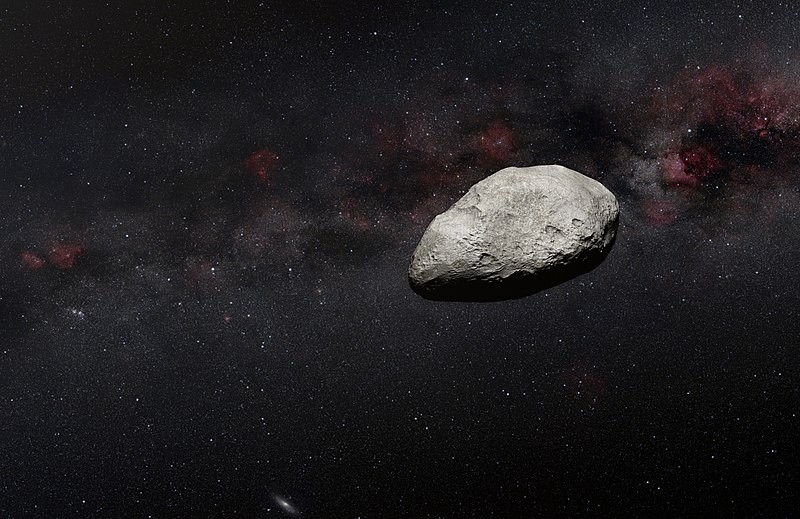
NASA keeps track of all near-Earth asteroids which can wander anywhere close to us. One of these asteroids is coming today and is expected to get horrifically near our planet.
Asteroid 2024 GJ2
On April 9, astronomers discovered a new asteroid dubbed 2024 GJ2. According to the European Space Agency (ESA), it is roughly the size of a car, measuring between 8.2 and 16 feet (2.5 and 5 meters). It is considered a near-Earth object (NEO) due to its small size. Aside from this, 2024 GJ2 is also considered a weight-class asteroid, which would have burned up in the Earth's atmosphere if its orbit happened to intersect ours directly.
Since its discovery, astronomers calculated that this asteroid would graze by Earth at a mere 12,000-mile (19,300-kilometer) distance. This is only 3% of the distance between the Earth and the moon.
Experts estimated that the space rock's closest approach distance to Earth would occur on April 11 at a distance of 7,641 miles (12,298 kilometers). It gets so close that the line on NASA's trajectory map for the asteroid passes through Earth as it crosses our planet's orbit. It will zoom by at 8.9 miles per second (14.4 kilometers per second).
According to ESA's near-Earth Objects Coordination Center, the next closest flyby of the new asteroid will not occur until 2093. When that happens, 2024 GJ2 will not pass nearly as close as it did today. The asteroid's 2093 approach is estimated to fly as close as 127,970 miles (205,947 kilometers) to Earth, about ten times further than today's flyby. It would also be just over half the distance between Earth and the moon.
READ ALSO : Is It Possible to Transform Asteroids Into Space Habitats? Scientist Explores Feasible, Innovative Concept
Keeping Track of Space Rocks
Most asteroids are located in the asteroid belt between Mars and Jupiter, although some are flung into the inner Solar System due to the attraction of Jupiter's gravity. According to NASA's calculations, there are more than 1 million asteroids in our Solar System, and some are classified as NEOs because they are less than 30 million miles (48 million kilometers) away from Earth.
NASA and other observatories monitor the orbits of objects discovered in the Solar System, keeping a particular eye on near-Earth objects that measure 460 feet (140 meters) and more extensive. This size could cause devastation if they crossed paths with our planet.
The provisional designation on asteroids such as 2024 GJ2 includes the year of its discovery followed by two letters that indicate the order of its discovery during that year. For instance, objects discovered between January 1 and 15 are designated in order of their discovery - AA, AB, AC, etc. Meanwhile, those found between January 16 and 31 are assigned the letters BA, BB, BC, etc.
So far, astronomers have predicted the orbits of known objects up to about 100 years in the future. NASA has cataloged almost 35,000 near-Earth asteroids, although very few pose any potential to our planet.
Space rocks are considered potentially hazardous asteroids (PHAs) or potentially dangerous objects (PHOs), and NASA is tracking 2,350 of them. They are defined as being closer to our planet than 4.6 million miles (7.4 million kilometers) and are more significant than 460 feet (140 meters) in diameter.
RELATED ARTICLE : How Hazardous Are Asteroids to Earth? Understanding Its Threat and the Reality of Near-Earth Encounters
Check out more news and information on Asteroids in Science Times.











